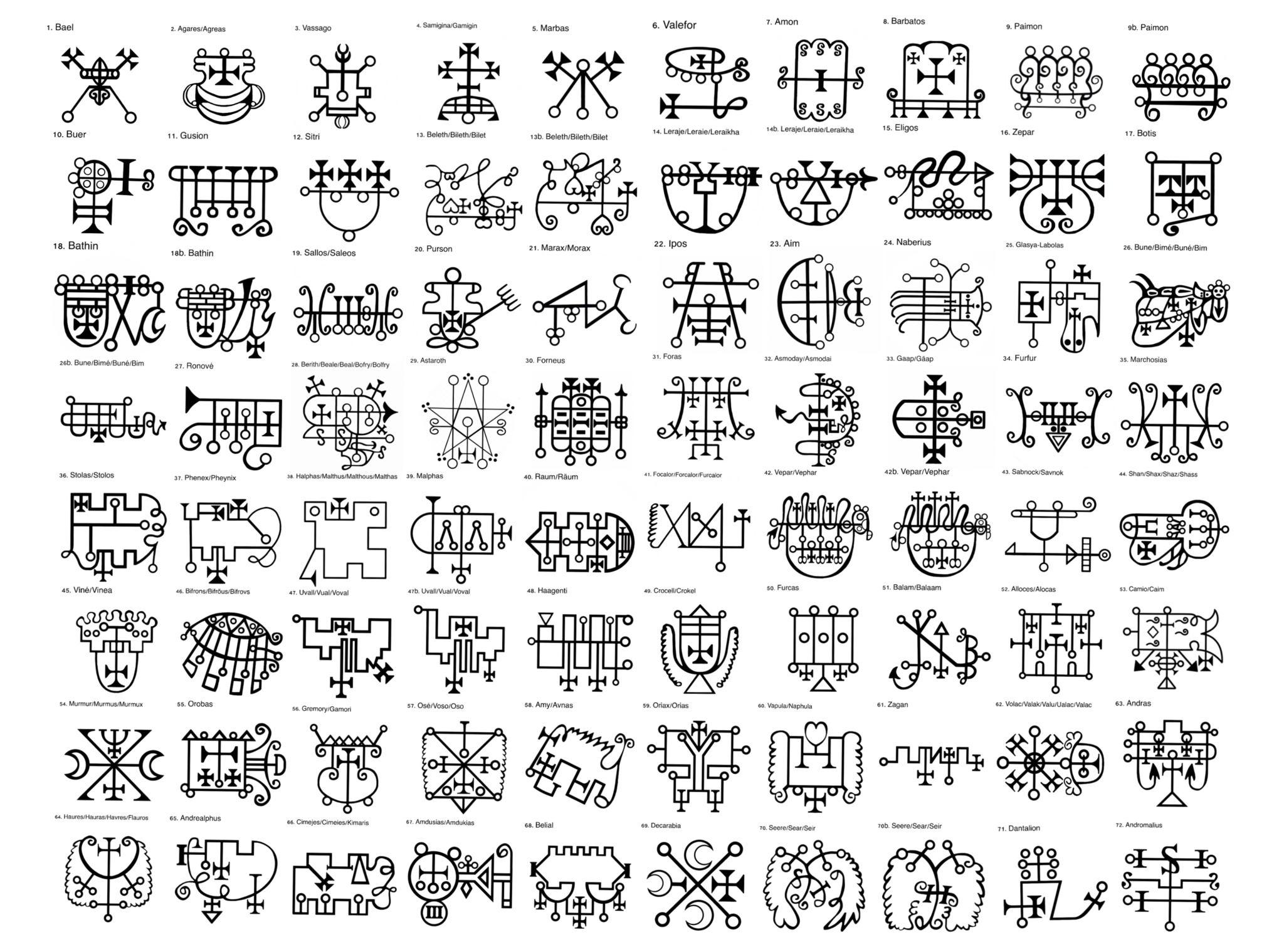|
Livre Des Esperitz
The ''Livre des Esperitz'' (or ''Book of Spirits'') is a 15th or 16th century French grimoire that inspired later works including Johann Weyer's ''Pseudomonarchia Daemonum'' and the ''Lesser Key of Solomon''."Les who's who démonologiques de la Renaissance et leurs ancêtres médiévaux" by Jean-Patrice Boudet, ''Médiévales'' 44, Spring 2003(online link) Twilit Grotto -- Esoteric Archives, 2000.''Forbidden Rites: A Necromancer's Manual of the Fifteenth Century''; Richard Kieckhefer; Pennsylvania State University Press, University Park, PA; 1997. P. 161The Goetia of Dr Rudd; Thomas Rudd, Ed. Stephen Skinner & David Rankine; 2007, Golden Hoard Press. p.32-33Entre science et nigromance: astrologie, divination et magie dans l'occident médiév ... [...More Info...] [...Related Items...] OR: [Wikipedia] [Google] [Baidu] |
Grimoire
A grimoire ( ) (also known as a "book of spells" or a "spellbook") is a textbook of magic, typically including instructions on how to create magical objects like talismans and amulets, how to perform magical spells, charms and divination, and how to summon or invoke supernatural entities such as angels, spirits, deities, and demons.Davies (2009:1) In many cases, the books themselves are believed to be imbued with magical powers, although in many cultures, other sacred texts that are not grimoires (such as the Bible) have been believed to have supernatural properties intrinsically. The only contents found in a grimoire would be information on spells, rituals, the preparation of magical tools, and lists of ingredients and their magical correspondences. In this manner, while all ''books on magic'' could be thought of as grimoires, not all ''magical books'' should be thought of as grimoires. While the term ''grimoire'' is originally European—and many Europeans throughout hist ... [...More Info...] [...Related Items...] OR: [Wikipedia] [Google] [Baidu] |
Bathin
Bathin (also ''Bathym'', ''Mathim'', or ''Marthim'') is a demon described in demonological grimoires. Variations He is ranked as a duke in the ''Lesser Key of Solomon'' (as the eighteenth spirit) and Johann Weyer's ''Pseudomonarchia Daemonum'' (as the tenth spirit), where he is described as a serpent-tailed and muscular man riding a pale horse, who knows the properties of plants and stones, transports people across countries, and rules 30 legions of demons. He also appears in the Livre des Esperitz, as "Machin," without the horse but ruling 37 legions of demons. The German edition of ''The Grimoire of Pope Honorius'' describes Bathin (again by the name Machin) as teaching about and providing foreign plants and rocks. In the ''Grand Grimoire'', he (as Bathsin or Bathim) is listed as a subordinate of Fleurety. According to Rudd, Bathin is opposed by the Shemhamphorasch ''Shem HaMephorash'' ( he, שֵׁם הַמְּפֹרָשׁ ''Šēm hamMəfōrāš'', also ''Shem ha-Mephor ... [...More Info...] [...Related Items...] OR: [Wikipedia] [Google] [Baidu] |
Purson
The demons' names (given below) are taken from the ''Ars Goetia'', which differs in terms of number and ranking from the ''Pseudomonarchia Daemonum'' of Johann Weyer. As a result of multiple translations, there are multiple spellings for some of the names, explained in more detail in the articles concerning them. The sole demon which appears in ''Pseudomonarchia Daemonum'' but not in the ''Ars Goetia'' is Pruflas. The 72 Angels of the Shem Hamephorash are considered the opposite and balancing force against these demons. Demons Kings # According to the Grand Grimoire, Baal (or Bael) is the head of the infernal powers. He is also the first demon listed in Wierus' ''Pseudomonarchia daemonum''. According to Wierus, Bael is the first king of Hell with estates in the east. He has three heads: a toad, a man, and a cat. He also speaks in a raucous, but well-formed voice, and commands 66 legions. Bael teaches the art of invisibility, and may be the equivalent of Baal or Baal ... [...More Info...] [...Related Items...] OR: [Wikipedia] [Google] [Baidu] |
Zagan (demon)
The demons' names (given below) are taken from the ''Ars Goetia'', which differs in terms of number and ranking from the ''Pseudomonarchia Daemonum'' of Johann Weyer. As a result of multiple translations, there are multiple spellings for some of the names, explained in more detail in the articles concerning them. The sole demon which appears in ''Pseudomonarchia Daemonum'' but not in the ''Ars Goetia'' is Pruflas. The Shem HaMephorash, 72 Angels of the Shem Hamephorash are considered the opposite and balancing force against these demons. Demons Kings # According to the Grand Grimoire, Baal (demon), Baal (or Bael) is the head of the infernal powers. He is also the first demon listed in Wierus' ''Pseudomonarchia daemonum''. According to Wierus, Bael is the first king of Hell with estates in the east. He has three heads: a toad, a man, and a cat. He also speaks in a raucous, but well-formed voice, and commands 66 legions. Bael teaches the art of invisibility, and may be ... [...More Info...] [...Related Items...] OR: [Wikipedia] [Google] [Baidu] |


